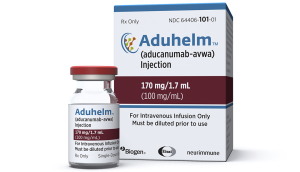
Software, made by hand but scaled instantly over cloud networks, is where the money is today.
But that will not be the case a decade from now.
The next revolution, in biotechnology, is already underway. I’ve described it as “DNA as a Programming Language.” While I made my life in computing, mostly as an observer, my son is now making his way into biotech, as a participant.
COVID-19 provided the “Visicalc moment” for this revolution, the giant “ah-ha” that created the mass market. Moderna, BionTech, and mRNA technology, gave the west vaccines against the disease long before older technologies. Moderna developed its vaccine within days of getting the DNA map of the COVID-19 genome.

This blew up last year regarding Aduhelm, created by Biogen to treat (but not cure) Alzheimer’s. Alzheimer’s is common among older people. My mother died of dementia, so I have a horse in this race. It’s said that 1 of every 6 people over 80 will get it. But Biogen decided to price Aduhelm at $56,000 per year.
Under current law, even Medicare can’t deny patients access to a drug once the FDA approves it. But you can’t have an unlimited draw from a limited pool of funds. Biogen dropped its price but the damage had been done.
The short-term result has been a recession for the sector. Smaller companies have begun laying off scientists. This comes at a bad time for my son, who just entered the job market.
I’m not making a political argument but an economic one. Drug pricing is based on scarcity. The attitude over the last 20 years is that targeted medications costing billions to develop must demand enormous prices.

The more eyes we get on the DNA code, the faster we can innovate. The faster we can innovate, the more abundant cutting-edge drugs and even cures can become, and the more affordable they can be. The present business model is simply inadequate. It must come under challenge, for sound business reasons. Until it does, progress and growth will be limited.









